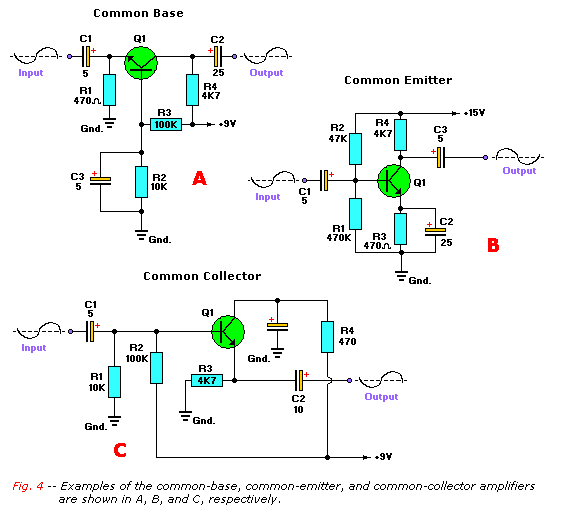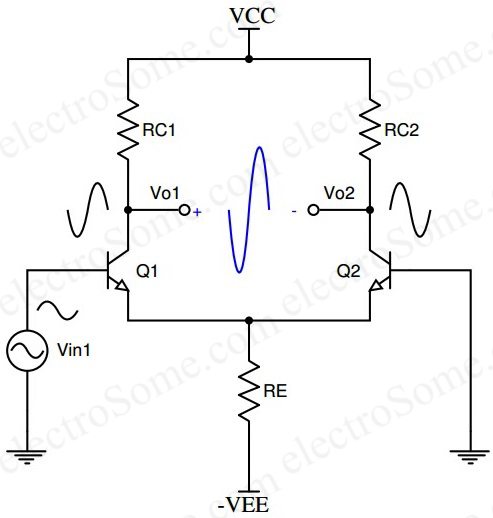
Where: β is the transistors current gain, R e is the equivalent emitter resistance, and r’ e is the ac resistance of the emitter-base diode. We can calculate the voltage gain, V A of the common collector amplifier by using the voltage divider formula as shown assuming that the base voltage, V B is actually the input voltage, V IN. However, in reality the magnitude of the output voltage (peak-to-peak) is generally in the 98 to 99% value of the input voltage which is close enough in most cases to be considered as unity gain. Since the value of r’ e is very small, and R E is much larger, usually in the kilohms (kΩ) range, the magnitude of the amplifiers output voltage is therefore less than its input voltage.
#Output impedance of npn transistor amplifier series
These two resistances are series connected thus acting as a potential divider network creating a voltage drop. The base current which flows through this internal base-emitter junction resistance also flows out and through the externally connected emitter resistor, R E. So as the emitter current increases, the emitter resistance decreases by a proportional amount.

Having said that, the emitters pn-junction effectively acts as a forward biased diode and for small AC input signals this emitter diode junction has a resistance given by: r’ e = 25mV/I e where the 25mV is the thermal voltage of the junction at room temperature (25 oC) and I e is the emitter current. Thus V IN and V OUT are in-phase producing zero phase difference between the input and output signals. Therefore the output signal present at the emitter is in-phase with the applied input signal at the base.Īs the amplifiers output signal is taken from across the emitter load this type of transistor configuration is also known as an Emitter Follower circuit as the emitter output “follows” or tracks any voltage changes to the base input signal, except that it remains about 0.7 volts (V BE) below the base voltage. However, as there is only one forward biased pn-junction between the transistors base and its emitter terminal, any input signal applied to the base passes directly through the junction to the emitter. Thus I E ≈ I CĪs with the common emitter (CE) amplifier configuration, the input signal is applied to the transistors base terminal, and as we said previously, the amplifiers output signal is taken from the emitter emitter terminal. However, as the base current is extremely small compared to the collector current, the emitter current is therefore approximately equal to the collector current. Thus the emitter current is a combination of base current and collector current as: I E = I B + I C. Thus the choice of R E depends greatly on I B and the transistors current gain Beta, β.Īs the base-emitter pn-junction is forward biased, base current flows through the junction to the emitter encouraging transistor action causing a much larger collector current, I C to flow. Ideally we would want the DC voltage drop across R E to be equal to half the supply voltage, V CC to make the transistors quiescent output voltage sit somewhere in the middle of the characteristics curves allowing for a maximum unclipped output signal.

However, in the common collector amplifier circuit, the same voltage drop, V E also represents the output voltage, V OUT.

With the collector terminal of the transistor connected directly to V CC and no collector resistance, (R C = 0) any collector current will generate a voltage drop across the emitter resistor R E.


 0 kommentar(er)
0 kommentar(er)
